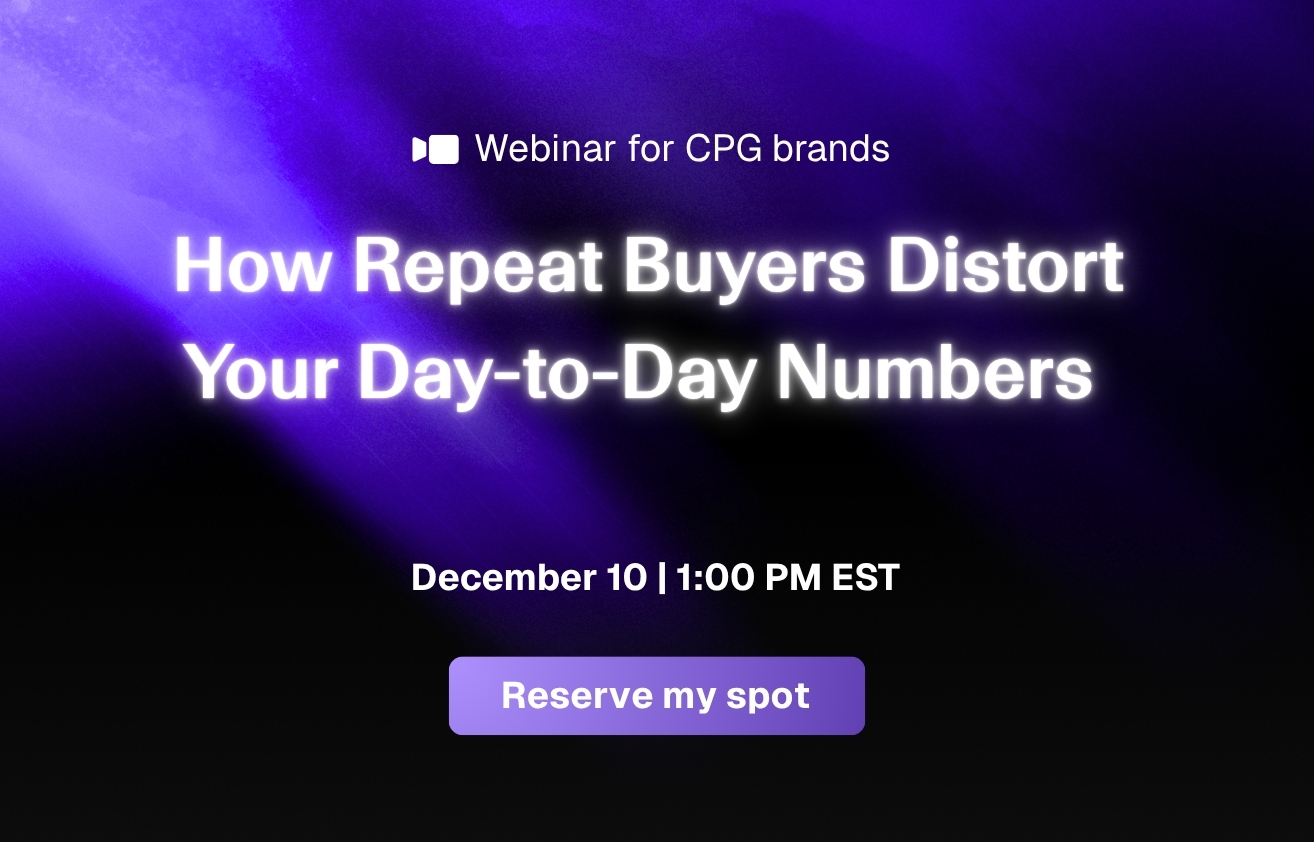Do you want to start a business on Amazon but have no money to purchase products? There’s an option, dropshipping! Selling products through dropshipping is the easiest methods to start making money in online selling.
If you are considering starting an eCommerce business through dropshipping, this guide will provide you with all the necessary information.
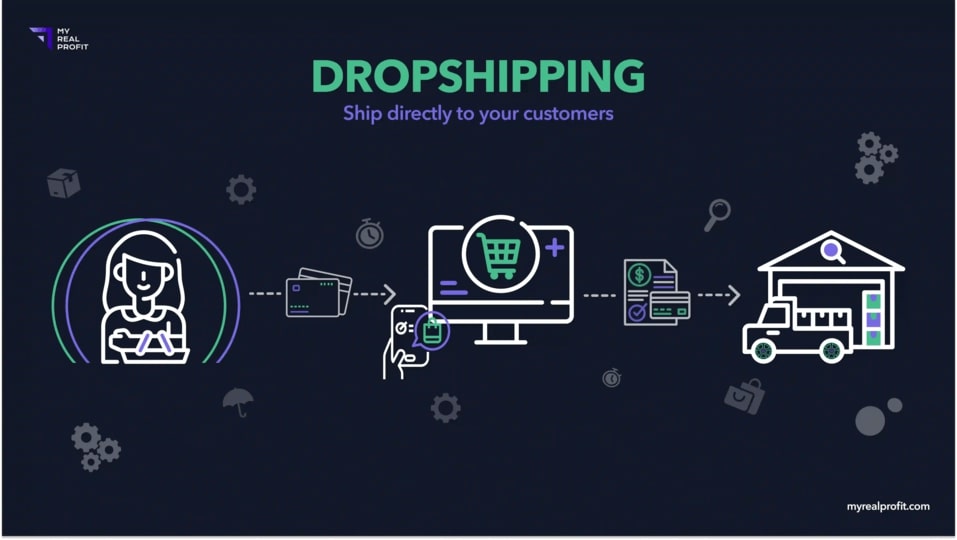
What Is Amazon Dropshipping?
Dropshipping is a business model where an Amazon seller doesn’t have to buy products in advance or keep them in stock. Instead, the supplier or manufacturer ships the products directly to the customer. Amazon offers a platform for your business and helps bring customers to your product listings. You and the dropshipping supplier are in charge of handling customer service, refunds, and returns.
The first thing you should think about is figuring out the best way for you to sell your products. Choosing the appropriate business model is very important for the new seller. Your choice will impact future costs and your level of involvement in the sales process.
There are 3 most popular business models:
Amazon FBA
Dropshipping
Retail arbitrage.
Each of them has its features, advantages, and disadvantages, but the main distinction is in the way the goods are shipped. Conceptually, they can be divided into two types: the classic commercial model (Amazon FBA and retail arbitrage) and the dropshipping model. Let’s look at each model visually.
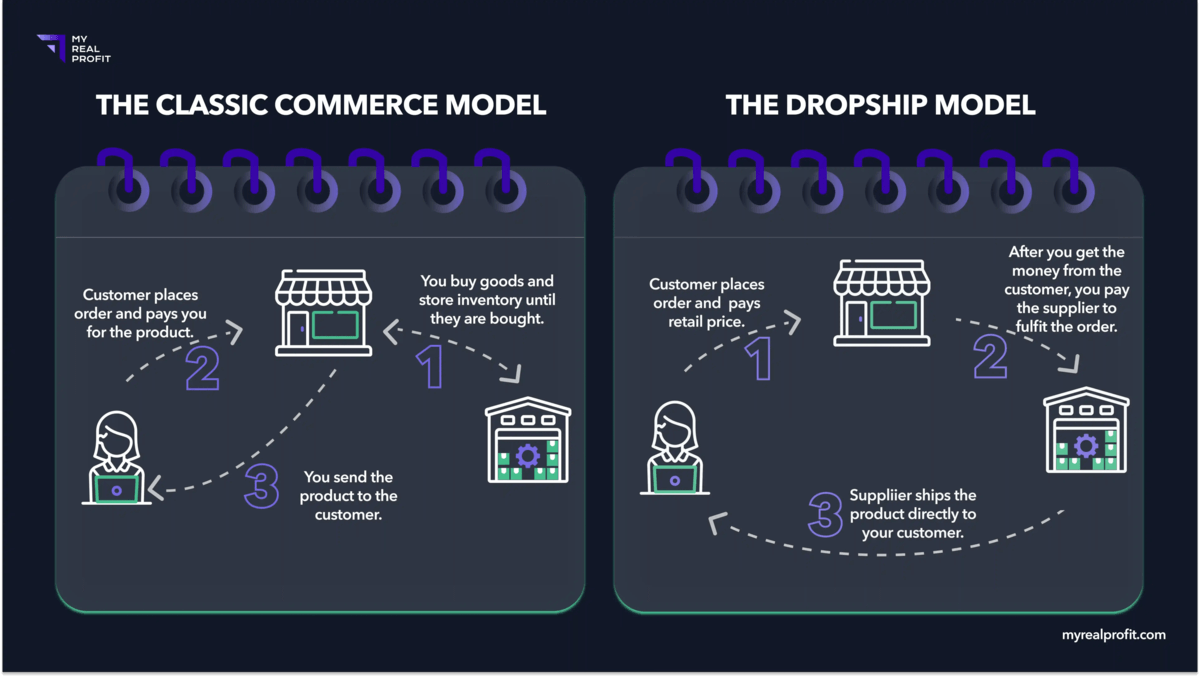
With Fulfillment by Amazon (FBA), you need to purchase product inventory in advance and ship it to Amazon fulfillment centers. After this, Amazon takes care of picking, packing, and shipping products to your customers as well as handling returns and refunds on your behalf. Using the FBA fulfillment method can provide several advantages: the ability to offer Prime shipping to your customers and a higher chance to win the Buy Box.
Visit our blog to learn about the functioning of Amazon Fulfillment Centers and what they are.
Another classic Amazon business model is retail arbitrage. Amazon retail arbitrage refers to the act of purchasing products with discounts from other retailers and reselling them at higher prices. This method offers two main advantages – it requires low initial investment and generates revenue quickly. However, scaling this model proves to be challenging. Moreover, the market price of your product may fluctuate, which means you could face the risk of either staying with the goods or selling them for a low profit.
The main difference between dropshipping on Amazon and other business models is that you don’t need any inventory to start. Instead, the product is only purchased when the customer has already paid for the order, making it less risky than other types of businesses.
How Does Amazon Dropshipping Work?
When you start a dropshipping business, first you should understand how it works. At first, this may seem complicated, so let’s analyze the whole process step by step.
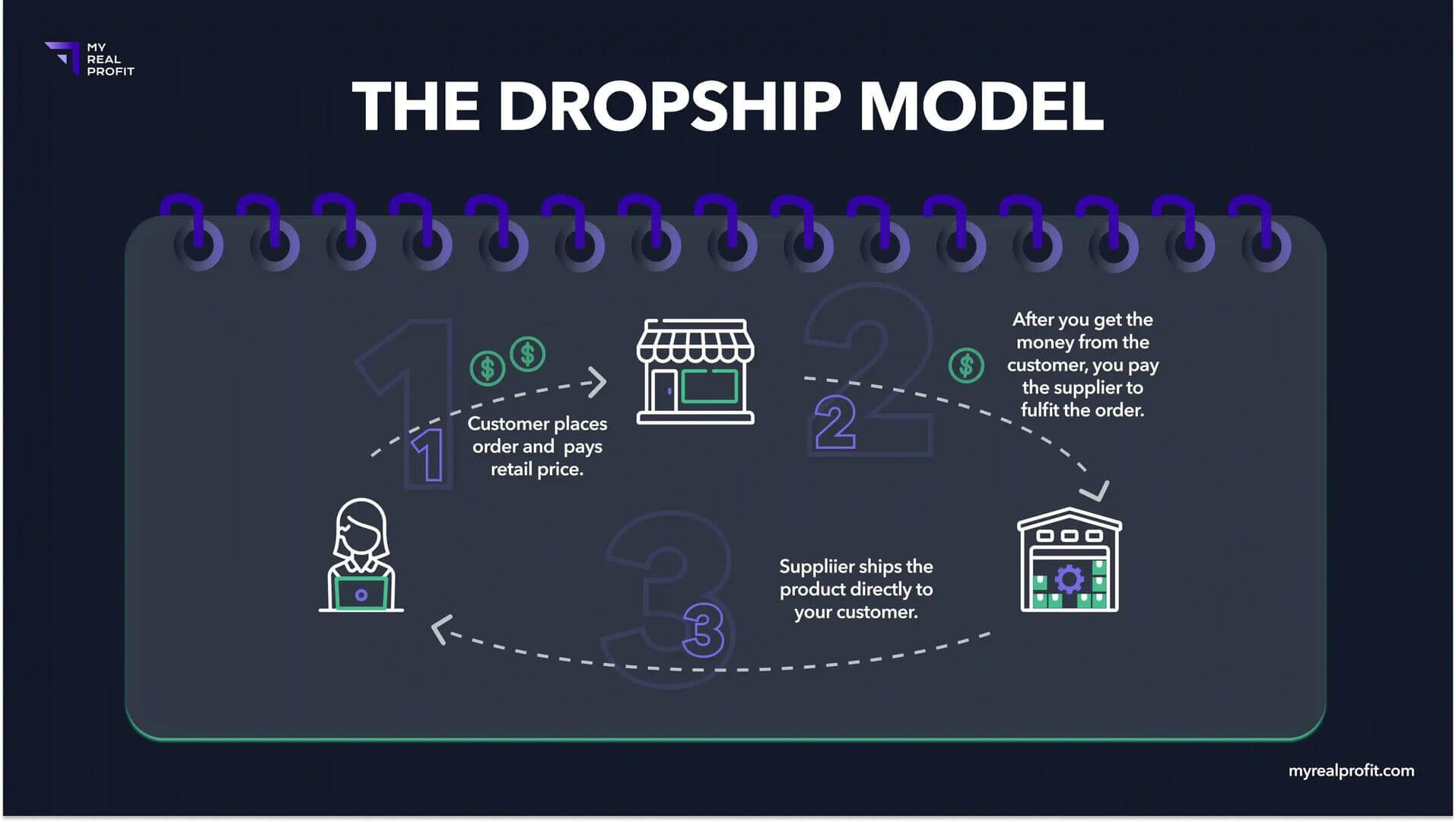
Сustomer places an order from your Amazon store.
Your store automatically sends the order to your dropship supplier.
The supplier prepares your customer’s order.
The dropship supplier ships the order directly to your customer.
Dropshipping on Amazon involves having a dropship supplier ship products to your customers directly. As an Amazon dropshipper, you’re responsible for order management, customer service, and marketing. This model allows you to offer a variety of products without the hassle of stock and warehouse rental fees.
Key Players in the Amazon Dropshipping Model
Retailer
An authorized dropshipping retailer is a person that owns Amazon account, markets and sells products to customers, also known as the seller of record. Retailer creates an online store, handles marketing, manages orders and customer inquiries.
Suppliers
Suppliers are the businesses that provide retailers with products to dropship. Suppliers are often wholesalers or manufacturers.
It’s important to have reliable suppliers that offer competitive pricing and high quality products to ensure customer satisfaction. By partnering with trustworthy wholesale suppliers, retailers can obtain the items they need to fulfill customer orders quickly and cost-effectively.
Customers
Customers are the end users of the dropshipping on Amazon model, as they purchase products from retailers. Retailers should always ensure that the customer experience is as smooth and enjoyable as possible.
How much does it cost to dropship on Amazon?
First of all, to do Amazon dropshipping, you need to register on Amazon’s website as a seller and choose the seller plan. Amazon offers Individual and Professional Seller Plans. If you choose the Individual plan, you will need to pay $0.99 for each item you sell. On the other hand, if you opt for the Professional seller account, you will be charged $39.99 every month fixed.
Secondly, you need to pay commission fee for each sale. Amazon’s dropshipping fees vary by product type but are typically in the 10%-15% range. Because of this fee, doing dropshipping on Amazon might not be possible for those who’re working with relatively small profit margins. Thus, if your margin is 25% after cost of goods, the marketplace takes 15% of each sale. The remaining profit goes into your account.9
Even after all charges, Amazon dropshipping is the cheapest way to start selling online. In addition, your risk of losing your investment is also minimized. In the worst case, if you don`t build the right business strategy – you will earn nothing.
Pros and Cons of Dropshipping on Amazon
Dropshipping on Amazon has become increasingly popular among people who want to start their own online business or test new products. But this way of selling is not for everyone: if you desire greater independence, have ambitions to promote your own brand, or are not willing to handle orders, you are probably better off looking at other sales methods.
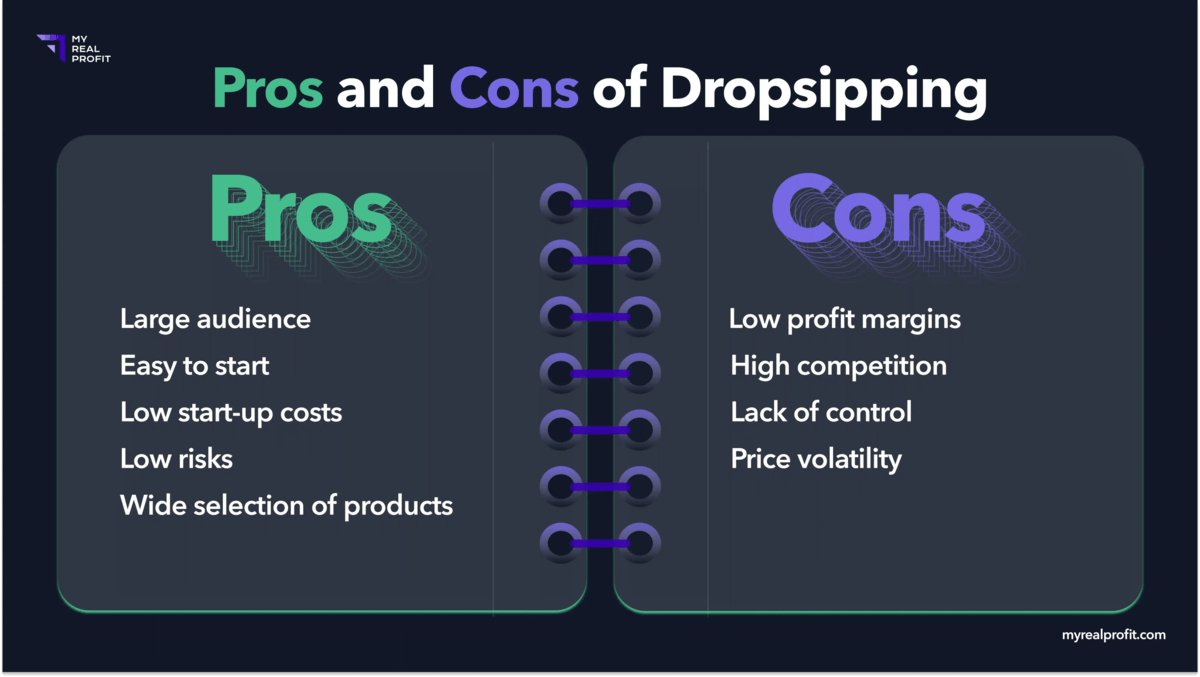
Advantages of dropshipping on Amazon
Easy to start
Running your own eCommerce store is much easier when you don’t have to deal with items directly. With Amazon dropshipping, you don’t have to worry about product inventory, pay for warehouse, pack, and ship orders. All you need to do is open an Amazon seller account and start listing products for sale – no investments or special tools are required. This makes it easy to start work and test different products.
Low start-up costs
Dropshipping is one of the cheapest ways to become an online retailer. Starting a dropshipping business involves low costs since you do not have to buy inventory or manage a manufacturing chain. You only need to cover the costs of running your online store on Amazon and marketing costs.
Low risks
Dropshipping is less risky for sellers than traditional retail. As a eCommerce store, you do not own the goods and are not responsible for them while they are in stock.
Payment for merchandise occurs only when the buyer has placed an order and paid for it. Reducing your risk of investing in items that will freeze your capital. All you need to do is find a trustworthy third-party supplier, and you’re ready to start.
Wide selection of products
By using the dropshipping model, you will be able to offer your customers a variety of products in different price categories. Additionally, you can modify your list of dropshipping products without concern regarding leftover or low stock.
Limitations of Dropshipping on Amazon
Low profit margins
Amazon dropshipping margins are low, so you must sell a product with at least 20% margins to have a profit after Amazon’s transaction fees and refunds not even mentioning marketing costs.
High competition
Due to dropshipping requiring the lowest investment, this business model is incredibly in demand and attractive to newcomers. Most of your products will not be unique, and the cost of goods will be higher than the wholesale price.
Therefore, you don’t have many maneuvers to stand out from the competition and win the Buy Box, while the product price is a crucial factor for winning it. As a result, you will have to play with prices to compete with other sellers, and usually, the lowest price will win over the buyer.
Lack of control
You cannot control the product quality or brand identity like with your own private label product. This can lead to customer dissatisfaction due to poor-quality products and a lack of trust in your brand identity.
Additionally, processing customer returns can be a major issue for your business. The liberal Amazon return policy lets customers return things even if they are not in sellable condition. So, if this happens, you have to pay extra expenses.
Price volatility
You don`t have guaranteed a fixed product price, as suppliers can change their prices without warning. Price changes could occur due to several reasons, such as changes in supply and demand, economic fluctuations, or currency exchange rates.
This means that you may have difficulty predicting profits from selling dropshipped items, as your expenses can increase at any moment.
How to Start Dropshipping on Amazon in 2023
Starting a profitable dropshipping business on Amazon is possible even for beginners. Check out these seven basic steps to launch a profitable dropshipping business on Amazon:
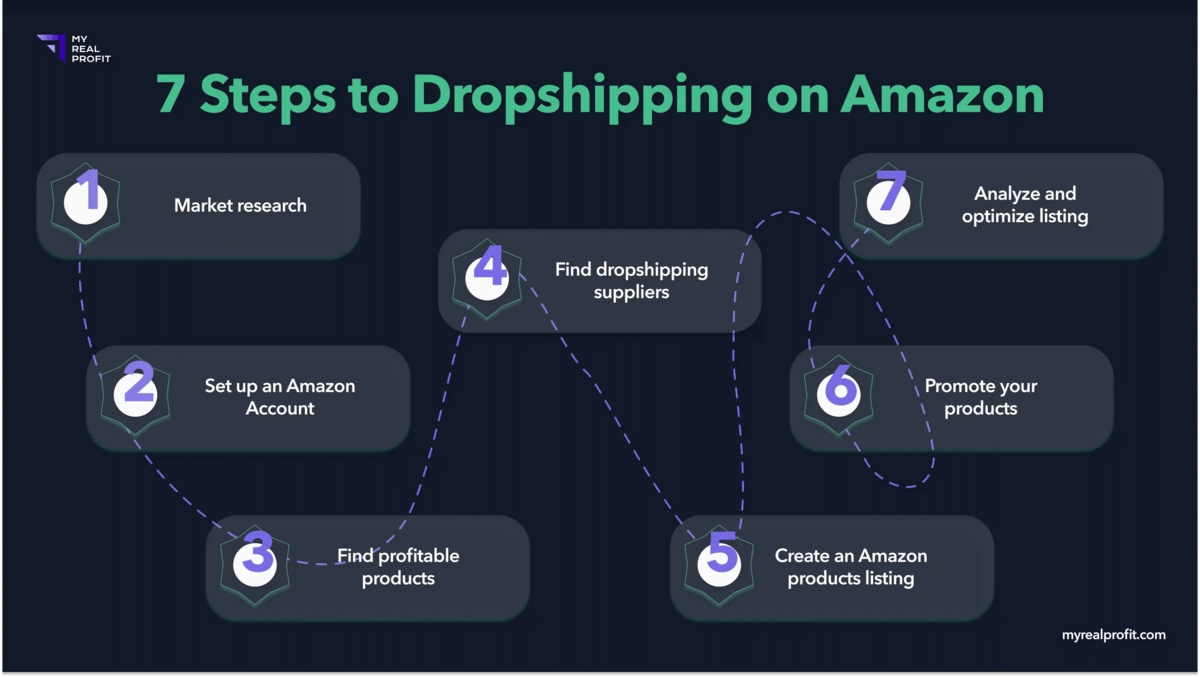
Step 1: Market research
Although setting up a dropshipping оn Amazon is relatively easy and quick, product research and developing business strategies are still necessary. So, the first step to starting a dropshipping business is deep market research. It involves researching the target market and analyzing trends and competition. This will help you focus on the right products with low competition.
Step 2: Set up an Amazon Account
To start dropshipping on Amazon, you’ll need to create an Amazon seller account. You can sign up for an Individual or Professional seller account.
Note: If you plan to sell at least a few items, choose the Professional plan. It will help you save money on Amazon fees.
Step 3: Find profitable products
Right goods are the backbone of a successful eСommerce business. You are looking for products that will sell like hotcakes, generate a lot of orders every day and bring in good revenue. Focus on items with prices that range between $20 to $35 and in at least 100 monthly sales.
Here are some of the best products to dropship in Amazon stores:
Trending products. You should sell products that people want. If many people want the product, it will be easy to make sales no matter how many other stores are selling it.
High ticket items. Dropshipping doesn’t make a high profit per unit, so the best products to dropship on Amazon are higher-priced items. These cost more money, but you will get more money back.
Niche products. Try to start selling products that people want but can’t buy in regular stores. You could sell special kitchen tools, car parts for old cars, or vintage clothes.
Having goods that meet multiple criteria at once can provide an additional advantage.
To see how well the product is performing on Amazon, you must check its sales rank or Best Sellers Rank (BSR). You can find any product on Amazon and then open the product page. Next, scroll down to the product details, where you will find information about the BSR.
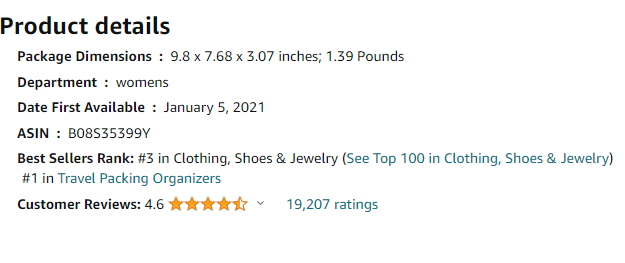
To learn more, how to pick the best category to sell, we recommend to check this article “Pros and Cons of the Most Profitable Categories on Amazon.“
Step 4: Find dropshipping suppliers
After defining your niche, your next step is to find a reliable supplier. You can find one or multiple suppliers through various methods, such as searching on Google, Alibaba, going to trade shows, or contacting the manufacturer directly.
You need a reliable supplier who can provide high-quality goods at a competitive price. Your reputation, sales, and perhaps your entire business depends on it. You should consider if the supplier has return policies or warranties that could benefit your customers.
Additionally, make sure to research the sales tax associated with the supplier, such as shipping costs and transaction fees. Try to establish a long-term relationship with your supplier to ensure that you can always count on them for quality products and reliable service.
Step 5: Create an Amazon product listing
Once you have a product idea and the supplier, the next step is to create a listing for your product on Amazon. Go to the Inventory tab. Scroll down and click on Add Product. Then, choose Create New Product Listing. Fill out all the required information and then click publish.
To attract more customers, it’s important that your product listing catches their attention with creative and compelling language and also includes relevant keywords. Pay attention to the quality and quantity of product pictures.
Good photos and accurate descriptions will help your customers understand exactly what they purchase. Remember that the product listing is the first impression customers will have of your product, so it must be done perfectly.
Step 6: Promote your products
Right marketing strategy is crucial for a successful product launch on Amazon. This involves promoting your products through PPC advertising, coupons, promodions and Vine.
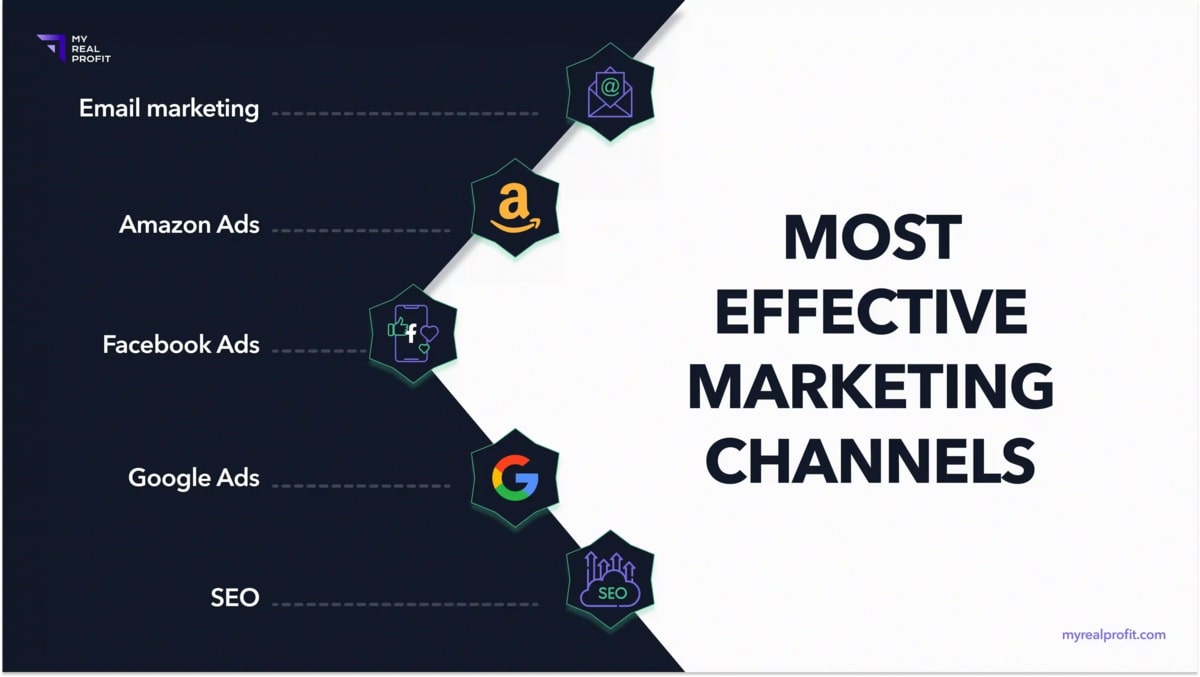
Make your goods visible in Amazon’s search results. This can be achieved through pay-per-click (PPC) campaigns that will drive traffic to your listings. Promote your products on social media platforms like Facebook, Instagram, and Twitter to increase visibility, loyalty, and, as a result, sales on Amazon.
Step 7: Analyze and optimize listings
Millions of customers search for products directly on Amazon every second. It is essential to optimize your listings with relevant keywords to increase your visibility and rank higher in Amazon search results. Therefore, make sure to include relevant keywords with high search volume in your product title, bullet points, and description.
Amazon Dropshipping Policy
Before diving into Amazon drop shipping, you must understand the platform’s policy. Amazon allows a third party to fulfill orders on your behalf, but before doing so, you need to meet certain conditions, such as:
You must be the seller of record. You cannot purchase products from another online retailer and have that retailer ship directly to customers if the shipment does not identify you as the seller.
You must remove any information that reveals the identity of the supplier who provides the order fulfillment as a third-party drop shipper.
All packing slips, invoices, external packaging, and other connected information must identify you as the seller.
You always remain responsible for accepting and processing customer returns of your products.
Follow all terms of your seller agreement and Amazon dropshipping policies.
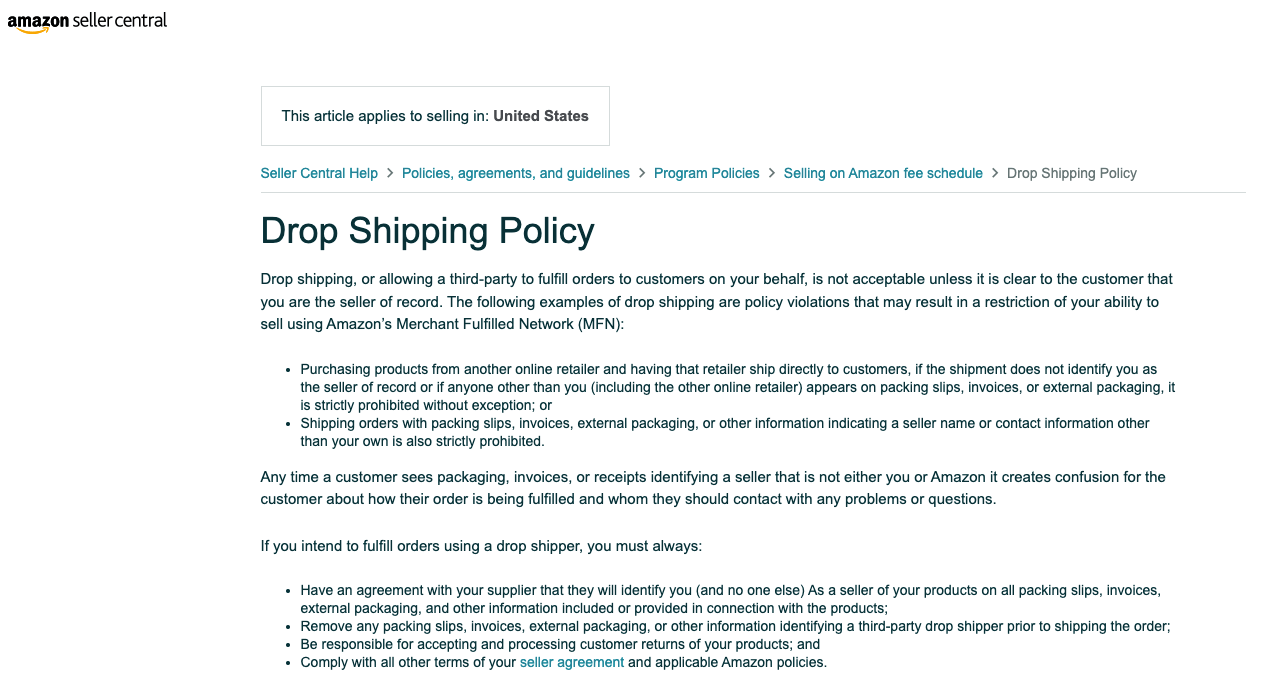
Please, note that your Amazon seller account can get suspended if you violate one of these rules.
Is Amazon Dropshipping Profitable in 2023?
Start dropshipping can be an extremely lucrative idea. There are many success stories of people who have quit their jobs and earned six-figure by running a dropshipping business. So if you have determination, persistence, and business savvy, you can do it too!
Though income varies, an average drop shipping margin is between 7% to 30% and is based on: the volume of goods sold, revenue, and expenses. Hold the optimum balance between your profit margin and competitive price to gain a competitive advantage and keep sales high.
Find a way to win the race and gain access to the Buy Box. It will help you boost margins and visibility. To create a reputable amazon drop shipping business with sustainable income for years, it is essential to maintain competitive pricing and provide excellent customer service.
Good margin helps sellers run a successful business. But some people don’t understand what it means. Do you have a good profit margin? If you’re unsure, read the article “Amazon Profit Margin For Sellers: Secrets To Achieving Healthy Margins“. It will tell you how to make money on Amazon and get the most out of your business.
Final Thoughts
Amazon dropshipping is the perfect sales channel to start selling quickly and with no seed money. It`s easy to set up and doesn`t demand difficult technical aspects of starting your own business. Moreover, you can use this business model before investing in your private label, merely to test the demand and profitability of new products and markets.
Whether you’re dropshipping, doing retail arbitrage, or maybe a private label on Amazon, it’s crucial to see the real numbers of your profitability. To track the success of your pricing and marketing strategies and ensure they are headed in the right direction, you should regularly monitor all your costs, revenues, and sales. One way to do this is by keeping daily profit&loss statements and comparing them to your sales, pricing, and promotional efforts. However, this process can be difficult and time-consuming.
If this is not for you, use the analytics software developed by My Real Profit for professional Amazon sellers. My Real Profit offers a special Profit Dashboard that accurately tracks over 70 fees on an accrual basis, even at the item level, and shows 15+ reports in real-time on one page. Using this data, you can identify patterns that might not be apparent at first sight.
With the right analytic tools, you can make money and ensure your Amazon dropshipping business is successful.



